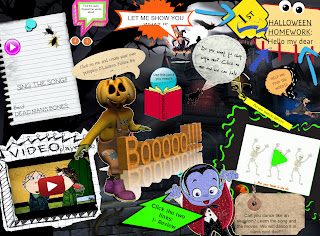We used the following steps to create the components of our written plan:
1. Write an area-of-focus statement.
2. Define variables.
3. Develop research questions.
4. Describe the membership of the action research group if necessary.
5. Describe if you will need to undertake any negotiation.
6. Develop a timeline.
7. Develop a statement of resources.
8. Develop data collection ideas.
We have noticed that our pupils tend to speak in Spanish rather than in English when working in groups. In addition, only some children usually speak and the others keep in silence. Hence, the objective of this action research is to get the pupils use the L2 when doing group work and also to get participation of all the group members.
2. Variables
Due to the problem stated above, at first, some hypothesis could be formulated:
- It might be possible that using a smiley faces ranking during the group work our pupils would be more willing to get involved in the discussions talking in English.
- The pupils who do not speak during the group work may feel that their opinion and/or participation are not valued.
- Pupils could not know how to do group work taking roles.
3. Develop research questions.
- Do they know enough language to express their opinions, agreement and disagreement, ask questions, etc. in the FL?
- Is the group atmosphere comfortable enough to encourage shy pupils to speak using English Language?
- Do some of the members of the group try to impose their opinion to their partners?
- Do they know how to assign roles so that everyone has a task to better the group work?
- Do they know how to assign roles so that everyone has a task to better the group work?
4. Description if we will need to undertake any negotiation.
Since one of the means we will use to gather information is the interview, we will ask parents for permission to tape- record their pupils so we could keep evidences of these interviews and analyze the results. In addition, we will need the collaboration of other teacher’s areas to contrast the pupils’ behaviour and participation when doing group work in other subjects.
5. Developing a timeline.
The first part of this research will take a period of two months, within the first term, specifically during November and December, in order to have enough time to put in practice the actions needed and get a real progress during the whole school year period.
The first part of this research will take a period of two months, within the first term, specifically during November and December, in order to have enough time to put in practice the actions needed and get a real progress during the whole school year period.
6. Developing a statement of resources:
- Teacher’s checklist.
- Tape recorder.
- Questionnaire form.
7. Develop data collection ideas.
In order to collect all the information needed we will use the following tools:
- Questionnaire.
- Interview.

































